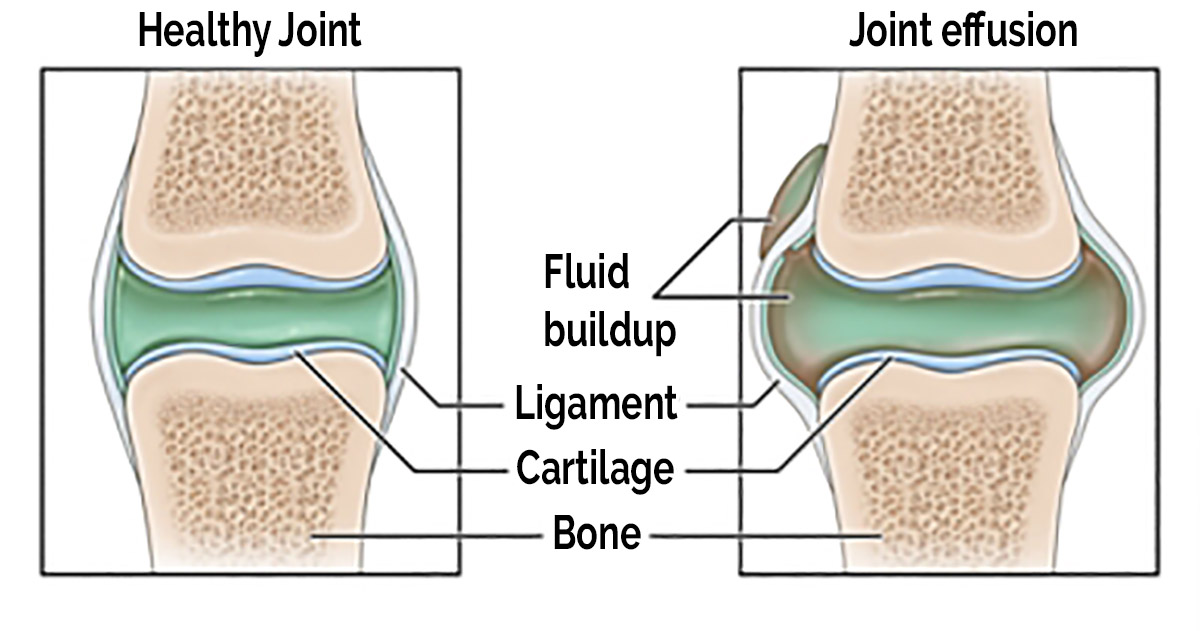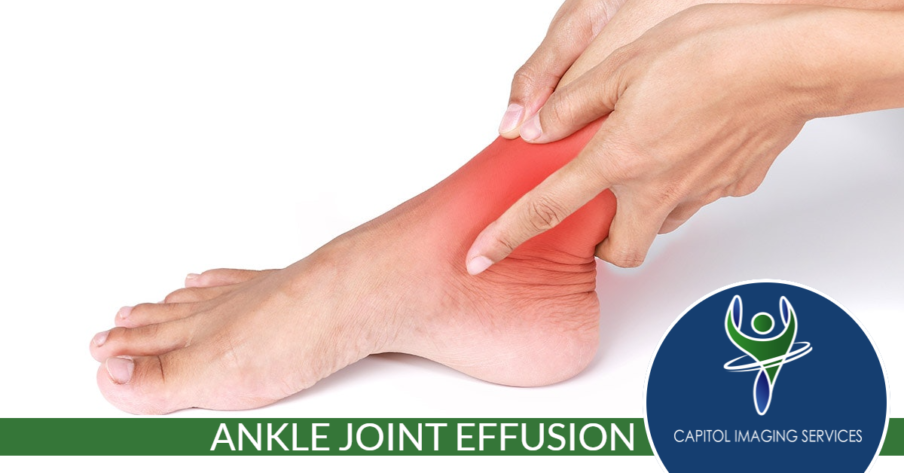An ankle joint effusion, otherwise known as a swollen ankle, is typically the result of excess fluids gathering in the soft tissues surrounding the joint. While joint effusion can occur anywhere in the body, one of the most common joints it is seen in is the ankle. In today’s post, we’ll talk about some of the most common causes of ankle joint effusion and how the professionals at Capitol Imaging Services help diagnose these causes.

What are the causes of ankle joint effusion?
There are many ways that a joint can become swollen. Some of the most common reasons that ankle joint effusion occurs are:

Infection
When a joint becomes infected, it fills with a fluid called pus. These types of infections are very dangerous and can cause permanent damage to the joint. Inflammation: Inflammatory conditions such as rheumatoid arthritis or gout can cause swelling in the ankle joints.

Trauma
An injury to the ligaments of the ankle or to the bones of the ankle can cause the effusion of the ankle joint.

Overuse
When a joint is overworked through repeated activity, it can become swollen.
Diagnosing the cause of the swelling
Most commonly, ankle joint effusion is diagnosed with either x-rays or Magnetic Resonance Imaging (MRI). MRI offers a more in-depth look at the inside of the ankle by generating a three-dimensional image for the doctor to examine, making this the often preferred method of diagnosing a swollen joint. This makes it clear whether it is a damaged bone or ligament causing the swelling, or something else. The radiologists at Capitol Imaging Service are experienced at reviewing, analyzing and interpreting the diagnostic imaging needed to pinpoint the cause of any type of joint effusion.
How is an effusion treated?
Once the cause of the ankle joint effusion is determined, it can be treated in a number of ways. Usually, joint swelling can be treated using oral medications such as antibiotics or steroids, depending on the cause. In uncommon cases, a physician may perform a procedure called arthrocentesis to drain the fluid from an effused joint, alleviating swelling. This fluid can then be sent to a lab for further testing.
In addition to oral medication, patients with ankle joint effusion may also be directed to use at-home remedies to alleviate their symptoms. A heat pack on the joint can help in cases where swelling is caused by arthritis, while an ice pack helps with pain associated with swelling from an injury. Whatever the cause of the swelling, resting the ankle and keeping weight off of the joint will help with the healing process.
When should I see a doctor?
If you are suffering from ankle joint effusion and are experiencing severe symptoms like fever, immobility, or loss of feeling, you should see a physician immediately. These could be a sign of infection or serious injury. If the swelling in your ankle persists and is accompanied by stiffness, redness and pain, this could indicate the presence of arthritis. Your physician will likely need to schedule imaging tests to determine the cause of the ankle pain and swelling.
Click here to learn more about our MRI services. Capitol Imaging Services is doctor trusted and patient preferred.


